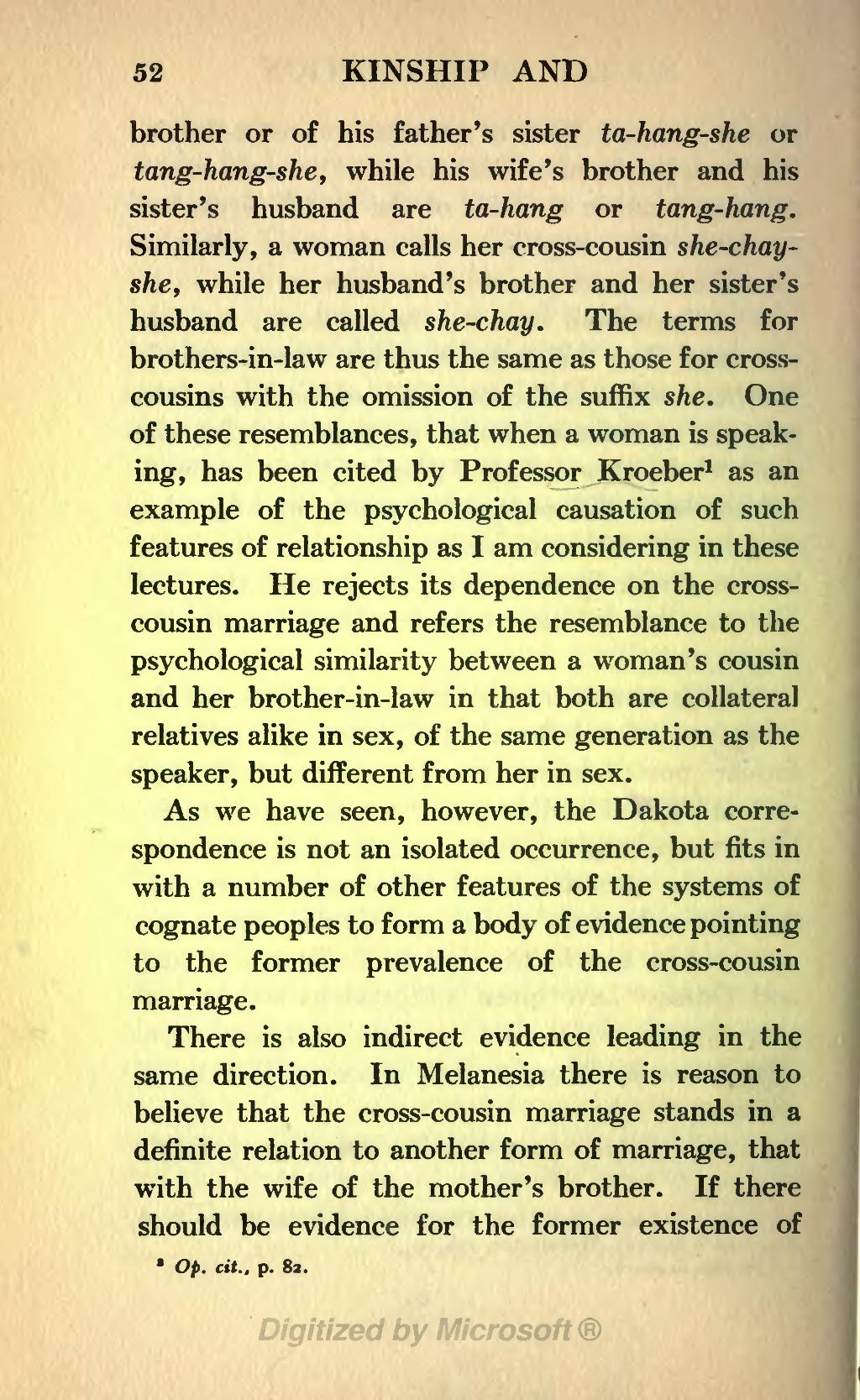brother or of his father's sister ta-hang-she or tang-hang-she, while his wife's brother and his sister's husband are ta-hang or tang-hang. Similarly, a woman calls her cross-cousin she-chay-she, while her husband's brother and her sister's husband are called she-chay. The terms for brothers-in-law are thus the same as those for cross-cousins with the omission of the suffix she. One of these resemblances, that when a woman is speaking, has been cited by Professor Kroeber[1] as an example of the psychological causation of such features of relationship as I am considering in these lectures. He rejects its dependence on the cross-cousin marriage and refers the resemblance to the psychological similarity between a woman's cousin and her brother-in-law in that both are collateral relatives alike in sex, of the same generation as the speaker, but different from her in sex.
As we have seen, however, the Dakota correspondence is not an isolated occurrence, but fits in with a number of other features of the systems of cognate peoples to form a body of evidence pointing to the former prevalence of the cross-cousin marriage.
There is also indirect evidence leading in the same direction. In Melanesia there is reason to believe that the cross-cousin marriage stands in a definite relation to another form of marriage, that with the wife of the mother's brother. If there should be evidence for the former existence of
- ↑ Op. cit., p. 82.
